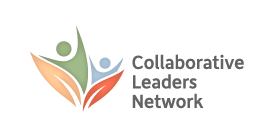Make everyone feel welcomed and valued, focus the group on the purpose and task of the group, and get their agreement on the group charter and communications plan.
The initial meetings of the collaboration group should lay a strong foundation for the work ahead and build participant commitment to the project purpose, goals, and scope. Depending on the complexity of the issue and the anticipated length of the collaboration, this stage might take from one to three meetings, possibly even more for complex, contentious issues, or where there are widely divergent perspectives.
Finding the right mix of people with influence, knowledge, commitment, passion, compassion, leadership, and vision to participate in a collaboration is one of the most important tasks in the process. Blending these individuals into a group that can work together effectively, with a strong commitment to the group’s purpose and sufficient trust in each other to challenge and question the easy solutions, is another.
The primary goals of the initial sessions are to make everyone feel welcomed and valued, focus the group on the purpose and task of the group, and get their agreement on the group charter and communications plan.
If possible early in the process, help the group members discuss and make a decision in an area where they have authority. This builds commitment to the process and reinforces the value of their participation.
